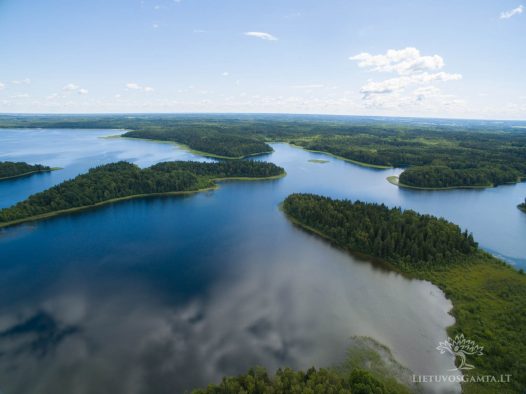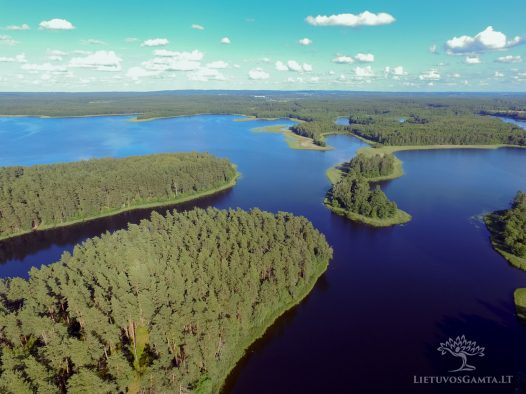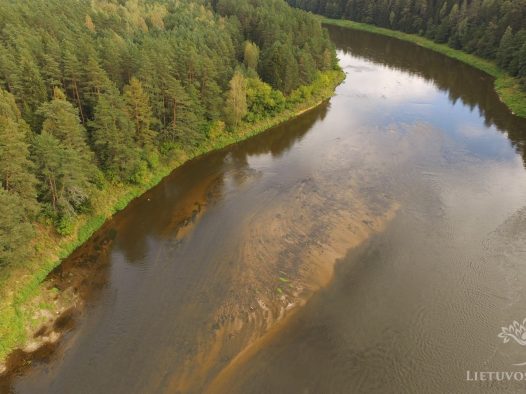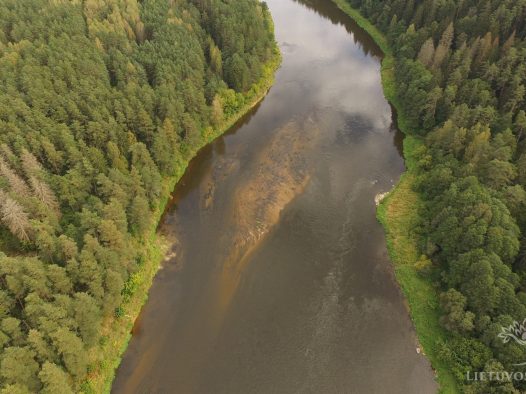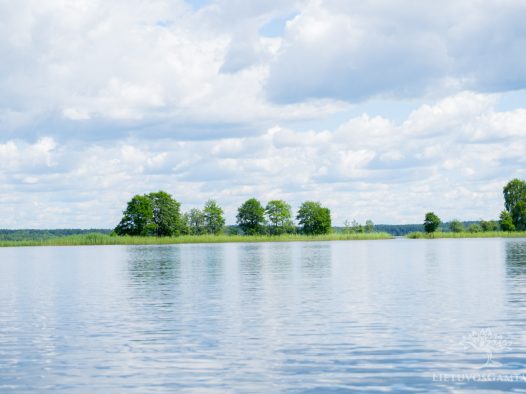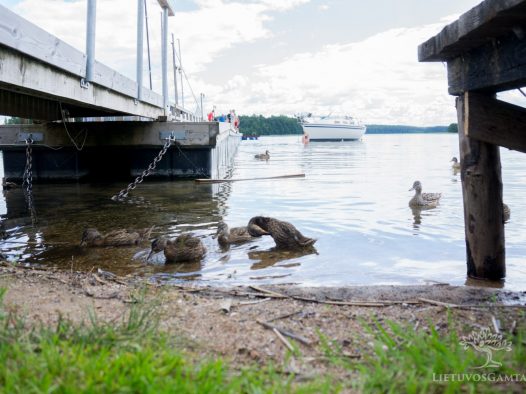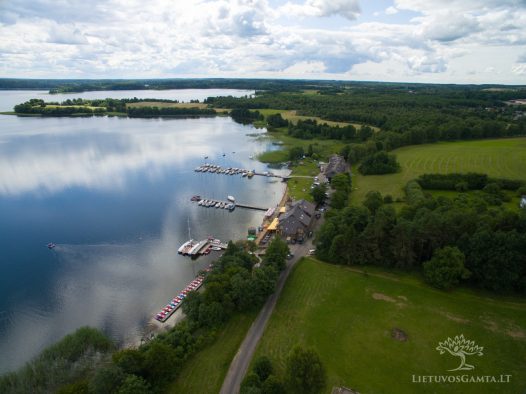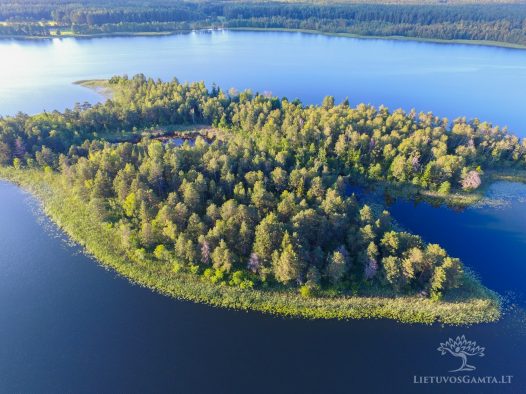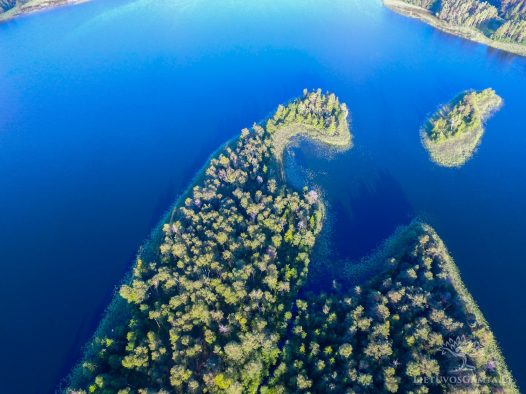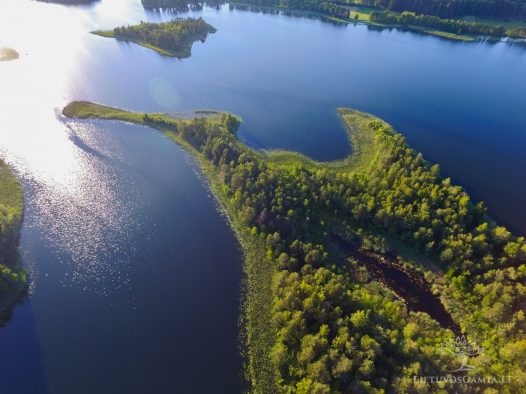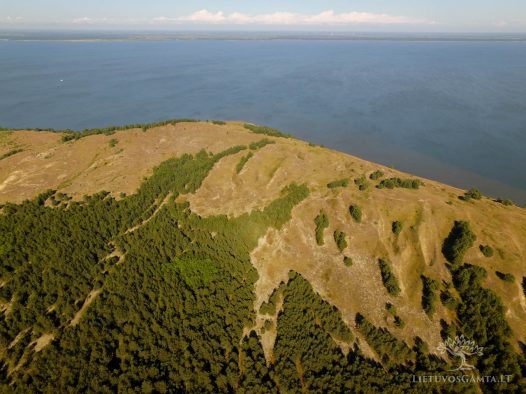Most of us now and then probably think how nice it would be to hide away from worries and works in a desert island. But did you know that you don’t need to fly to the other end of the earth to do this? The lakes of Lithuania are abundant in amazing inhabitable and uninhabitable islands, islets and peninsulas.
The most beautiful islands of Lithuania – pieces of heaven near home
During the old times, the islands were loved by the gentry, where they would build castles, set up holiday homes, hunt and feast. Some islands even hold the remains of the buildings from the middle ages. One of such famous places is the Castle Island located in the lake of Galvė, Trakai, visited by the majority of Lithuanians who have taken a walk in the magnificent Trakai Castle.
The castle was rebuilt based on the data of archaeological research and only its foundation remembers the dark middle ages. Inside the castle, the expositions of archaeological findings, helping to learn about the life and household of the ancient people, are constantly held. You can get to the island through the bridges connecting it to Trakai or take a romantic paddle in a boat, which are rented by the locals.
It is thought that a similar castle stood on the island located in the Plateliai Lake in the 11th century and the remains of the Žygimantas Augustas castle are sunken to the bottom of this lake. Interestingly, the wooden bridge that once connected the former settlement of Šventorkalnis and the Castle Island preserved really well underwater and you can see its piles when scuba diving.
The Castle Island of the Plateliai is not large, only five and half hectares, however, it is picturesque and rich in vegetation. Centenarian oaks and lindens are growing on the island, and the abundantly blooming hollow Corydalis is entered in the Red List. Here’s another hero of this book – the Strobilomyces strobilaceus, which is so in love with the island’s ecosystem that it doesn’t grow anywhere else in Lithuania.
The not so well known, but a larger Briedsalė island embellishes the Plateliai Lake. This island was once full of wild animals and moos especially liked it. This is how the island got its name. You probably already know where the gentry and their guests settled in the Castle Island would go for a hunt. Nowadays, you won’t see any moos here and the large part of it is covered in swamps. However, some interesting groups of wildlife found home here: common mergansers, common goldeneyes and other swamp birds and other small animals.
Not many know that the little islet located in the Ilgis Lake, district of Varėna hides a beautiful and romantic story. An old oak is growing on the island called Love (orig. Meilė). Long ago people believed that a love oath given by this tree would join the two much closer than the church vows. Lovers would go to the tree in hopes that the sacred tree, having listened to the declaration of love, would bless them for faithfulness and eternal love. Currently, a small bridge leads to the island from the Ilzenburgas manor, which was also given the name of Love (orig. Meilė).
Baluošas Lake in the district of Ignalina abundantly embellished in islands. There are seven islands in it. Largest of the islands, Ilgasalė, is interesting, because it has a separate little lake formed in the middle, called “The eye of Baluošas”. This type of island is the only one in Lithuania. Water birds, which hatch their young there, love the shorelines abundantly covered in lilies.
Not only are the islands of Lithuania interesting, but peninsulas and capes as well. One of the most famous ones is the Naglių Cape in Neringa. The cape expanding from Juodkrantė to the Curonian Lagoon was formed when a nearby forest was cut down and the dunes blown by the winds started moving to the water. The cape was given the name of a village that once stood there. The village was buried by the moving dune and the people moved to other settlements. You can observe the Naglių cape when travelling through the recreational path of Naglių reservation. Just be careful and pay attention to nature – these areas are abundant in vegetation, animals and small animals, which are entered in the Red List.
From all the capes located in lakes, the one worth visiting is the Dringis cape in the district of Ignalina. The long and narrow cape expands to the middle of the lake. The shallow, sandy shore surrounding the cape tempts the fishermen, which, as it is said, come back with buckets of fish. The cape is almost all covered in a swampy forest and is acknowledged as an object of natural heritage.
The visitors will find more descriptions of picturesque islands, peninsulas and capes at the www.lietuvosgamta.lt website. There are many unique photographs, video guides and video stories about the most beautiful places to visit in Lithuania. All of them can be easily found by using the coordinates and maps provided on the website.

